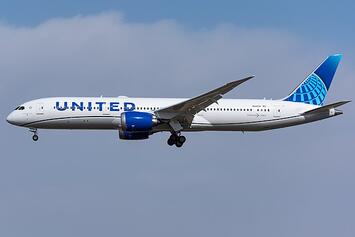
Airlines carried 94 percent as many passengers in September 2022 as they did in September 2019, according to passenger counts published by the Transportation Security Administration. That’s up from 91 percent in August and 88 percent in September.
According to United Airlines CEO Scott Kirby, the industry is thriving due to changes in leisure travel habits following the pandemic. People who work at home at least some days a week are taking more frequent short pleasure trips for long weekends.
“Hybrid work allows every weekend to be a holiday weekend,” says Kirby. Business travel may be down, both because of the impending recession and because of increased on-line meetings, but this is mostly offset by the increase in recreational travel. Apparently, he says, “It wasn’t money that constrained people from travel” before the pandemic, “it was time.”
This alludes to Marchetti’s constant, the notion that people have a fixed travel-time budget (usually estimated to be about an hour a day). If they spend less time commuting, they have more time in their budget for other kinds of travel.
The main reason why September air travel was 94 percent, instead of more than 100 percent, of pre-pandemic levels, Kirby observes, is the airlines’ limited ability to meet the demand due to supply-chain and labor problems. Air travel will greatly increase, he implies, as the airlines buy more aircraft and hire more employees, both of which United is doing as fast as it can.
Meanwhile, Amtrak is unusually late in publishing its monthly performance report for August. As of July, Amtrak was carrying 84 percent of pre-pandemic numbers, somewhat short of the airlines’ record.
If business travel were down and people were taking Amtrak as well as flying for short leisure trips, we might expect to see travel on long-distance trains (which mostly carry vacation travelers) up relative to travel in the Boston-Washington corridor (which mostly carries business travelers). But we don’t: in July, Northeast Corridor trains carried 87 percent of pre-pandemic numbers, while long-distance trains carried just 78 percent. State-supported trains (which carry a mix of business and vacation travelers) were even worse off at 75 percent.
Telecommuters who are using effectively long weekends for short jaunts are more likely to fly than take a train. A two-day train trip might be a nice part of a two-week vacation, but people are not going to spend most of their four-day weekends en route as doing so would exceed their travel-time budgets. Thus, Amtrak is not likely to benefit as much from the same boom in short vacation trips that the airlines are enjoying.
This piece first appeared at The Antiplanner.
Randal O'Toole, the Antiplanner, is a policy analyst with nearly 50 years of experience reviewing transportation and land-use plans and the author of The Best-Laid Plans: How Government Planning Harms Your Quality of Life, Your Pocketbook, and Your Future.
Photo: N509FZ via Wikimedia, under CC 4.0 License












